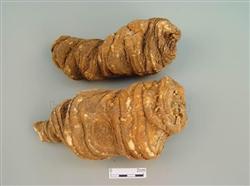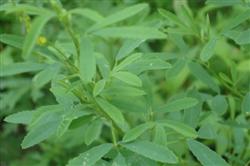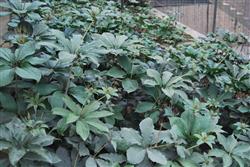What's the use of building a new building? How to grow and manage?

What's the use of building a new building? How to grow and manage? It belongs to Liliaceae, perennial herb, and is one of the main ingredients of traditional Chinese medicine protected by the state, such as "Yunnan Baiyao" and "Gongxuening". The medicinal part is the dry tuber of Zhonglou. Heavy building taste bitter, slightly cold; there are small poison, return to the liver meridian. It has the effects of clearing away heat and detoxification, detumescence and hemostasis, cooling the liver and calming shock, etc., for the treatment of carbuncle swelling, sore throat, poisonous snake bite, fall and pain. In recent years, with the increase of practical value of Chonglou and Panax notoginseng, the economic income is also very considerable. Shili Village Township of Jinping County has developed nearly 100 mu. First, select humus soil or acid laterite with high topography, good drainage and rich humus. 2. The transplanting seedlings can be transplanted 2 years after emergence, and the row spacing is 15 "× 20". The row spacing of sliced plants with terminal buds is 15 "× 20". The cuttings without terminal buds were dug up when the adventitious buds had been formed in the following winter and planted according to the row spacing of 20 "× 25". After transplanting, cover loose hair or crushed grass, and then build a shade net to shade. In order to facilitate the management of the height of the shading net should be maintained at 1.8Muth2m, when fixing the shading net, it should be folded and expanded later. In the areas with strong winter wind and snow, the shading net should be folded up in time (mid-October), and the shading net should be covered before emergence in April of the following year. Transplanting time should be in winter, after the aboveground stem falls, when the rhizome is dormant, pay attention to protect the terminal bud and fibrous root from damage in the process of transplanting. Third, field management 1. Ploughing and weeding. As the root system of the heavy building is relatively shallow, and new roots sprout in autumn and winter, attention must be paid to ploughing gently with a small hoe at the initial stage of underground stem growth before and after September-October, so as not to damage the underground stem. It is necessary to combine soil cultivation and winter fertilizer when ploughing and weeding. The Beginning of Spring before and after the gradual growth of seedlings, found that weeds should be pulled out in time, weeding should be careful not to hurt the seedlings and underground stems, so as not to affect the growth of Dianzhong. 2. Irrigation and drainage. Drainage ditches should be opened around the field to facilitate drainage. After the emergence of heavy buildings, they should be watered in time in case of drought and pay attention to drainage after rain. The stem should not be watered before emergence on the ground, otherwise the root will rot easily. 3. Fertilization. Fertilization is required twice a year, that is, winter fertilizer and spring fertilizer. (1) winter fertilizer. It is generally carried out from late November to early December, first gently ploughing the topsoil, selecting a clear day, applying potassium sulfate or compound fertilizer 20,30kg per mu. (2) Spring fertilizer. Apply 30kg potassium sulfate or compound fertilizer per mu after seedling emergence (April). 4. Take the top. Before the end of vegetative growth, remove the ovary from the plants that do not leave seeds, but retain the sepals (which can undergo photosynthesis) to ensure the transfer of organic matter to the rhizome. Fourth, pest control 1. Root rot. It mainly harms the underground stem and causes erosion of the underground stem. Soak seeds with 500-fold carbendazim for 2 hours to dredge the drainage ditch. If the disease has occurred, it can be irrigated with 500 times carbendazim or 200 times raw lime water to reduce the damage. 2. Leaf blight. Mainly damage leaves, followed by damage to stems, pedicels and capsules and underground stems, resulting in underground stem erosion. Prevention and control methods: timely drainage, loosening soil. If you find the initial symptoms, you can use 200 times Bordeaux liquid spray. 3. Ground tiger and grub. To damage the roots, you can use 90% crystal trichlorfon, 180ml 200g per mu, stir-fried wheat skin or rice bran 8kg 10kg, scattered in the field for trapping. Click to get more planting techniques of Rhizoma thunbergii
- Prev

What kind of environment is suitable for growing Scutellaria baicalensis? How to sow Scutellaria baicalensis?
What kind of environment is suitable for growing Scutellaria baicalensis? How to sow Scutellaria baicalensis? Please introduce that Scutellaria baicalensis Georgi can grow in areas with annual average temperature of 4-10 ℃, annual accumulated temperature of 10 ℃ of 2500-4000 ℃, frost-free period of 120-180 days, and suitable soil conditions for sowing: deep soil layer, good drainage, loam, sandy loam or humus loam, flat ground.
- Next

Sharing: planting techniques of heavy buildings
Chong Lou is a perennial herb with a long growth cycle. It takes 8 to 10 years from sowing to harvest. It is one of the main components of traditional Chinese medicine protected by Yunnan Baiyao and Gongxuening. In recent years, with the continuous increase in demand, the rate of mining far exceeds the speed of natural growth, resulting in rare resources.
Related
- Fuxing push coffee new agricultural production and marketing class: lack of small-scale processing plants
- Jujube rice field leisure farm deep ploughing Yilan for five years to create a space for organic food and play
- Nongyu Farm-A trial of organic papaya for brave women with advanced technology
- Four points for attention in the prevention and control of diseases and insect pests of edible fungi
- How to add nutrient solution to Edible Fungi
- Is there any good way to control edible fungus mites?
- Open Inoculation Technology of Edible Fungi
- Is there any clever way to use fertilizer for edible fungus in winter?
- What agents are used to kill the pathogens of edible fungi in the mushroom shed?
- Rapid drying of Edible Fungi

